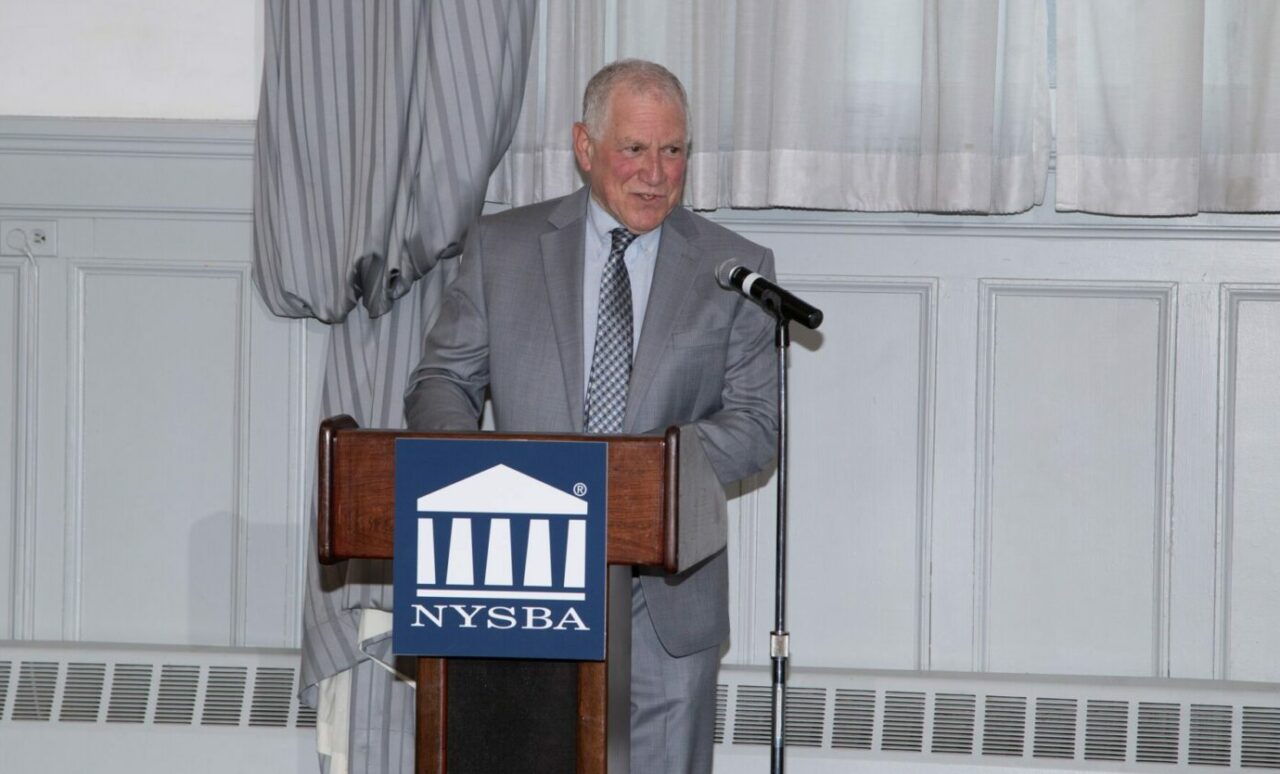How Lawyers Moved 20 Years Forward in 18 Months
11.10.2021
“We have moved 20 years forward in technology in a year and a half,” Mark Berman, one of the chairs of the New York State Bar Association’s Task Force on the Post-Pandemic Future of the Profession, told lawyers discussing technology and law practice management.
At a task force forum Nov. 9, lawyers and law students compared notes, stories, solutions, and concerns over the rapid adaptions they were required to make to keep up with work and the world. It was clear in the sharing that they were grateful to discover not only the best technology practices but also the comfort of one another.
The group all agreed that there was a loss of connection that technology could not replace. Popping into an office or calling a quick meeting down the hall to ask questions or brainstorm a case was no longer possible.
Marian Rice, L’Abbate, Balkan, Colavita & Contini, and other attorneys expressed this fear about the future. “I do worry about the next generation of lawyers who learn by seeing, and if they lose that, what are we losing in our profession?”
However, it’s very clear that what we aren’t losing is the amount of upkeep we are now faced with. It’s been more difficult to focus on the interpersonal when we have to focus on what’s required to get through our daily work life. From educating our staff, our clients, and even, ourselves we must keep up before we’re left behind. The forum worked well in covering all the bases, with an honest reminder that tomorrow, things could change.
Nuts & Bolts
Ryan Torino, an attorney at Torino & Bernstein and a member of the New York State Bar Association Committee on Technology in the Legal Profession, led the discussion on the nuts and bolts of virtual practice. The importance of office guidelines and security were emphasized as well as maintaining the ethical requirements to the firm, the law and the client.
As we have learned, personally and professionally, technology can provide advantages, but it can also threaten the confidentiality and the functioning of computer networks and employee devices both at home and in the office.
“One of the things we had to figure out was not only getting the staff on board with remote work but also our team of volunteer attorneys who had never been remote,” said Natalie Sobchak, director of Pro Bono Programs at Pace Women’s Justice Center. “So, we had to establish protocols for the volunteers for working from home and connecting with our systems.”
Staff who didn’t have the remote experience prior to COVID-19 were left to struggle to keep up with their co-workers. The learning curve wasn’t the only issue; getting the software to the staff was also difficult with supplies on backorder or stranded in offices.
Office systems had to be updated, software distributed, staff trained, and policies put into place quickly to move as seamlessly as possible. Susan Harper, the managing director of the Bates Group, said that her firm requires monthly training on technology and policies that evolve rapidly and that the staff is tested after being trained.
“These are really best practices for companies to adopt and it’s very important to have these trainings in place, because many, at least the major corporations that we deal with, and we’re dealing with financial services, require a certain standard and best practices to use in your cyber hygiene,” she said.
Strong passwords, multifactor authentication, password-protected document sharing, and updated systems (including personal cellphones) are encouraged to protect the client, attorney, and the law practice.
Zoom and Its Effect on Various Law Practice Areas
By a landslide, mediation attorneys favored the ability to connect remotely. It was more efficient for time management, travel, and scheduling for clients and for attorneys. The ability to quickly move into breakout rooms, and to keep parties separated brought significant advances to the process. It also created a new courtesy sometimes missing in person.
“I think that the behavior I’ve seen from my adversaries has been more professional. Everybody has to be more mindful not to speak over one another, and everyone is more aware of the fact that microphones may or may not pick up voices and so they’re slower and the pacing is just more deliberate,” said Anne Sekel, partner and litigation lawyer with Foley & Lardner.
But there are also cons: Clients who are unable to connect, distrust heightened by clients who can’t establish a one-on-one relationship with their counsel, clients who struggle to use the technology, and the loss of the sometimes spontaneous resolution of a matter in the hallway.
There are many questions on what the future looks like in post-pandemic practices, and they likely won’t be answered for quite some time. But the sentiment was clear: Just as we recover from one change, another is created, and so it’s been since it started. What we do know is that we are here to learn about it together, as colleagues, and as community members to help not just one another in practice, but also our clients, and the justice system keep up with the changes as ethically, and as patiently as possible.
At the end of the forum, the request was made again to consider filling out two surveys to help guide the task force in its recommendations for shaping the profession.
Link to General Survey: www.surveymonkey.com/r/postpandemicgeneral
Link to Law Student Survey: www.surveymonkey.com/r/postpandemiclawstudent






